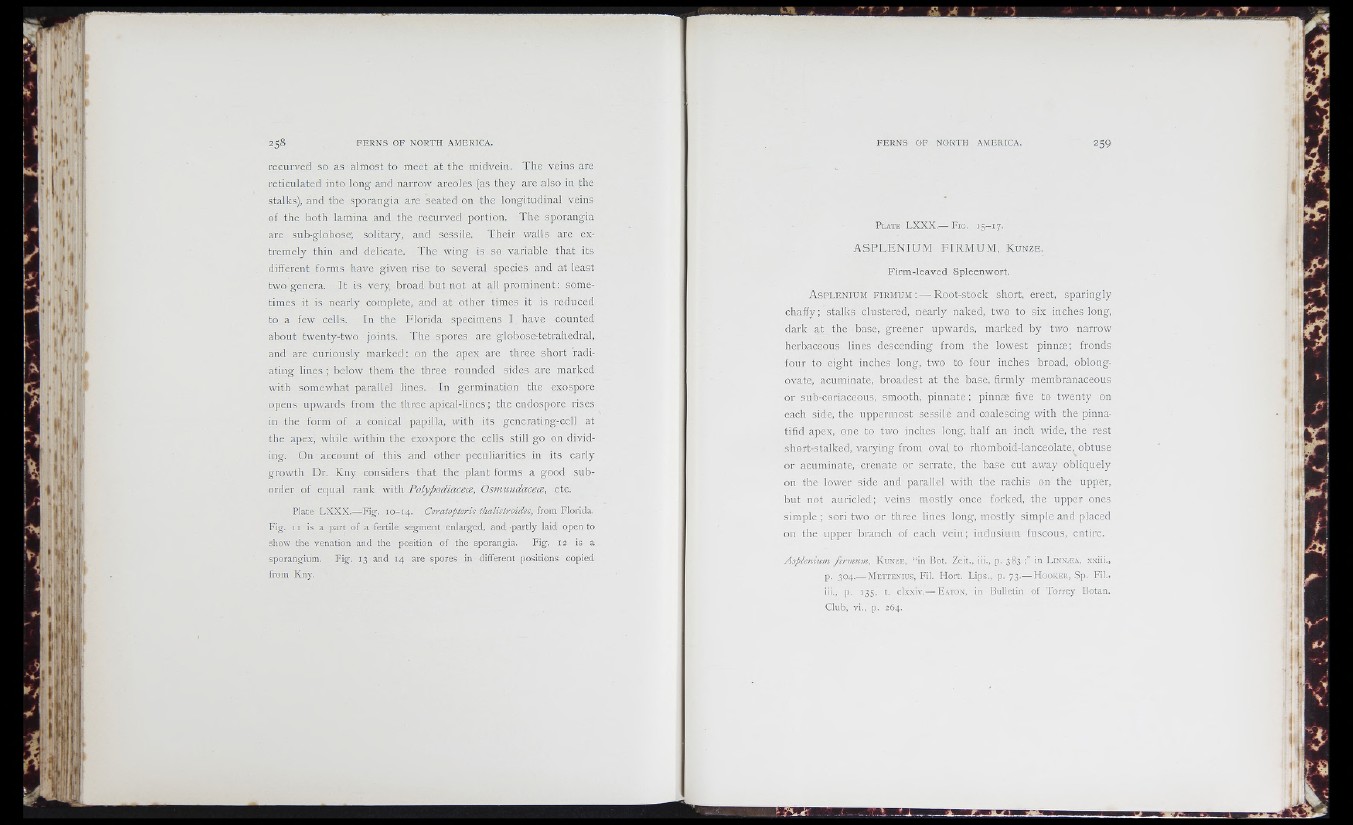
j U''.'
■
recurved so as almost to meet at the midvein. The veins are
reticulated into long and narrow areoles (as they are also in the
stalks), and the sporangia are seated on the longitudinal veins
of the both lamina and the recurved portion. The sporangia
are sub-globose; solitary, and sessile. Their walls are extremely
thill and delicate. The wing is so variable that its
different forms have given rise to several species and at least
two genera. It is very broad but not at all prominent: sometimes
it is nearly complete, and at other times it is reduced
to a few cells. In the Florida specimens I have counted
about twenty-two joints. The spores are globose-tetrahedral,
and are curiously marked: on the apex are three short radiating
lines ; below them the three rounded sides are marked
with somewhat parallel lines. In germination the exospore
opens upwards from the three apical-Iines ; the endospore rises
in the form of a conical papilla, with its geiierating-ccll at
the apex, while within the exoxpore the cells still go on dividing.
On account of this and other peculiarities in its early
growth Dr. Kny considers that the plant forms a good suborder
of equal rank with Polypodiaceoe, Osimtndaceoe, etc.
Plate LX X X .—P'ig. 10 -14 . Ceratopteris thalictroides, from Florida.
Fig. I I is a part of a fertile segment enlarged, and partly laid open to
show the venation and the position of the sporangia. Fig. 12 is a
sporangium. Fig. 13 and 14 are spores in different positions copied
from Kny.
P l a t e LX X X .— F ig . 1 5 - 1 7 .
A S P L E N IU M F IRM UM , K u n z e .
F irm -le a v e d Spleenwort.
A s p l e n i u m f i r m u m : — Root-stock short, erect, sparingly
chaffy ; stalks clustered, nearly naked, two to six inches long,
dark at the base, greener upwards, marked by two narrow
herbaceous lines descending from the lowest pinnæ; fronds
four to eight inches long, two to four inches broad, oblong-
ovate, acuminate, broadest at the base, firmly membranaceous
or sub-coriaceous, smooth, pinnate; pinnæ five to twenty on
each side, the uppermost sessile and coalescing with the pinnatifid
apex, one to two inches long, half an inch wide, the rest
short-stalked, varying from oval to rhomboid-lanceolate, obtuse
or acuminate, crenate or serrate, the base cut away obliquely
on the lower side and parallel with the rachis on the upper,
but not auricled; veins mostly once forked, the upper ones
simple; sori two or three lines long, mostly simple and placed
on. the upper branch of each vein; indusium fuscous, entire.
Asplenium firmum, K u n z e , “ in Bot. Zeit., iii., p. 383 in L in n æ a , xxiii.,
p. 304.— M e t t e n iu s , Fil. Hort. Lips., p. 73.— H o o k e r , Sp. F il.
iii., p. 13 5, t. clxxiv.— L .aton, in Bulletin of Torrey Botan.
Club, vi., p. 264.
i t